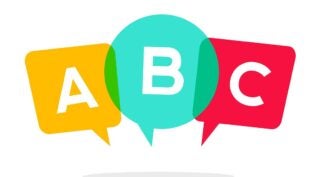
Small businesses don’t necessarily need to grow quickly (though they should certainly want to grow, as stagnation is one very small step away from contraction). They often operate in less competitive markets and don’t have the explicit goal of becoming a huge company. Without the brutality of highly-funded competitors trying to eat your lunch day after day, small businesses often have the luxury of growing more slowly, even totally organically.
As an example, my second company, a design and development agency, never took any outside funding of any kind. In fact, it was profitable on day one — I charged a decent hourly rate for my services, some of which went to my salary and some of which stayed in the business. Over time, I used our profits to hire more people and turn it into a nice little business.
This worked for us because the goal was never to become a huge company. We had competitors, of course, but often, we were the only serious bidders on a project. We weren’t in a race to create a defensible intellectual property that would dramatically alter the dynamics of a market or create a new one entirely (which you’re often doing in a startup).
Here’s a handy gut-check for the “startup or small business” question: Imagine your company 10 years in the future, having grown entirely on its own profits. Is your company irrelevant? If so, it’s probably a startup. If not, it’s likely a small business.
Small businesses often do need capital to get their footing. You may need to hire some help before you have the profits necessary to do so, or make payroll before you’ve been paid on a project. You may have to purchase inventory, equipment or commit to retail space for some period of time. So how might you do that? Here are some common ways:
- Your own job. Just like in a startup, it’s very common for founders to put in their own capital to get a small business going. This could come from savings so you can go full-time right away, but it could also be a surplus salary that you can use while you moonlight working on your business. If you have a steady 9-to-5 job, you may not only have a little extra cash, but a few hours each day to dedicate to a project on the side. That flexibility can be invaluable in the early days.
- Friends and family. Also like in a startup, founders may be able to raise some money from friends and family who are willing to risk some of their assets. And while the friends and family method is fairly common, I’ve developed a strong personal bias against this type of financing. Business, as they say, is business — and things go wrong. I had a close family member provide some debt financing to my first business, and that hung over my head every day we hadn’t paid it back. While I am extremely grateful for the help we received, and while we were able to fully pay it back, it can be highly emotionally draining to worry about something outside your control happening and failing to meet your obligations to a close friend or family member.
- A service component in your business. Many upfront costs come when you’re selling products (as opposed to services). Equipment or inventory purchases can precede revenue significantly. Services, on the other hand, can be profitable right away with very little upfront expense required. Savvy entrepreneurs have a great opportunity to use a service side of the business to fund another more capital intensive portion.
- Angel investors. Though angels are more traditionally thought of as startup backers, it’s possible to raise money from high-net-worth individuals for a small business. Angels, because they’re investing their own money, have different incentives than VCs and a large exit might be less important to them. Some may be willing to structure their financing as debt as opposed to equity.
- Bank loans or other debt. There are many different types of small business lenders and debt products for small businesses — banks, government agencies, online lenders, credit card companies and microcredit programs are all out there offering term loans, lines of credit, cards, cash advances, invoice financing and much more. Small business debt is too huge and diverse a topic to cover in any detail here, but as a general rule, try not to take on “speculative” debt. That means when you take on debt, it should be clear you’ll have the cash flows necessary to cover future interest and principal payments.
Note one important omission in this list: venture capital. As a rule, venture capital does not fund small businesses — and that’s OK. VCs need their companies to grow fast and achieve large exits. VC firms have their own investors (known as limited partners), who often demand 25 percent or more annual returns. That’s why most VCs only bet on companies that can grow quickly and become really big.
The huge upside is that in most of these types of small business financing, you’re not giving up that “piece of the pie” that you would with VCs. Small businesses can lead to great lifestyles for their owners who can pay themselves as much as they want, work when they want to, and build something on their own terms.
As a final note, not all businesses are created equal, but that doesn’t mean one type is “better” than the other. The market your business competes in, its potential for growth, and perhaps most importantly, your own goals with your business — will dictate the type of funding you should go after.
A version of this post originally appeared on the author’s blog, here.
Author: Tim Chaves is the founder & CEO at ZipBooks, a free accounting tool with built-in invoice financing, time tracking & payment processing.












